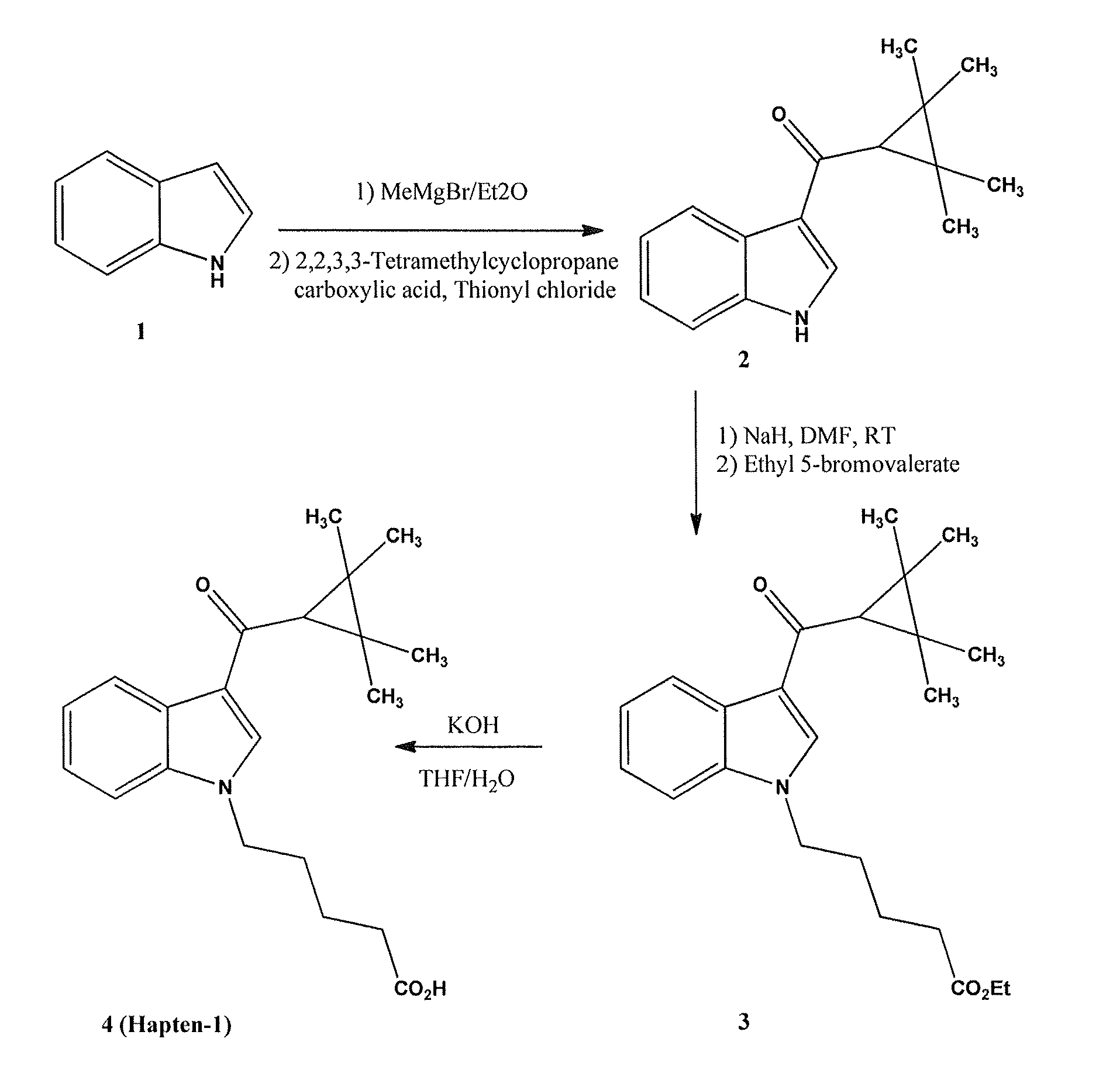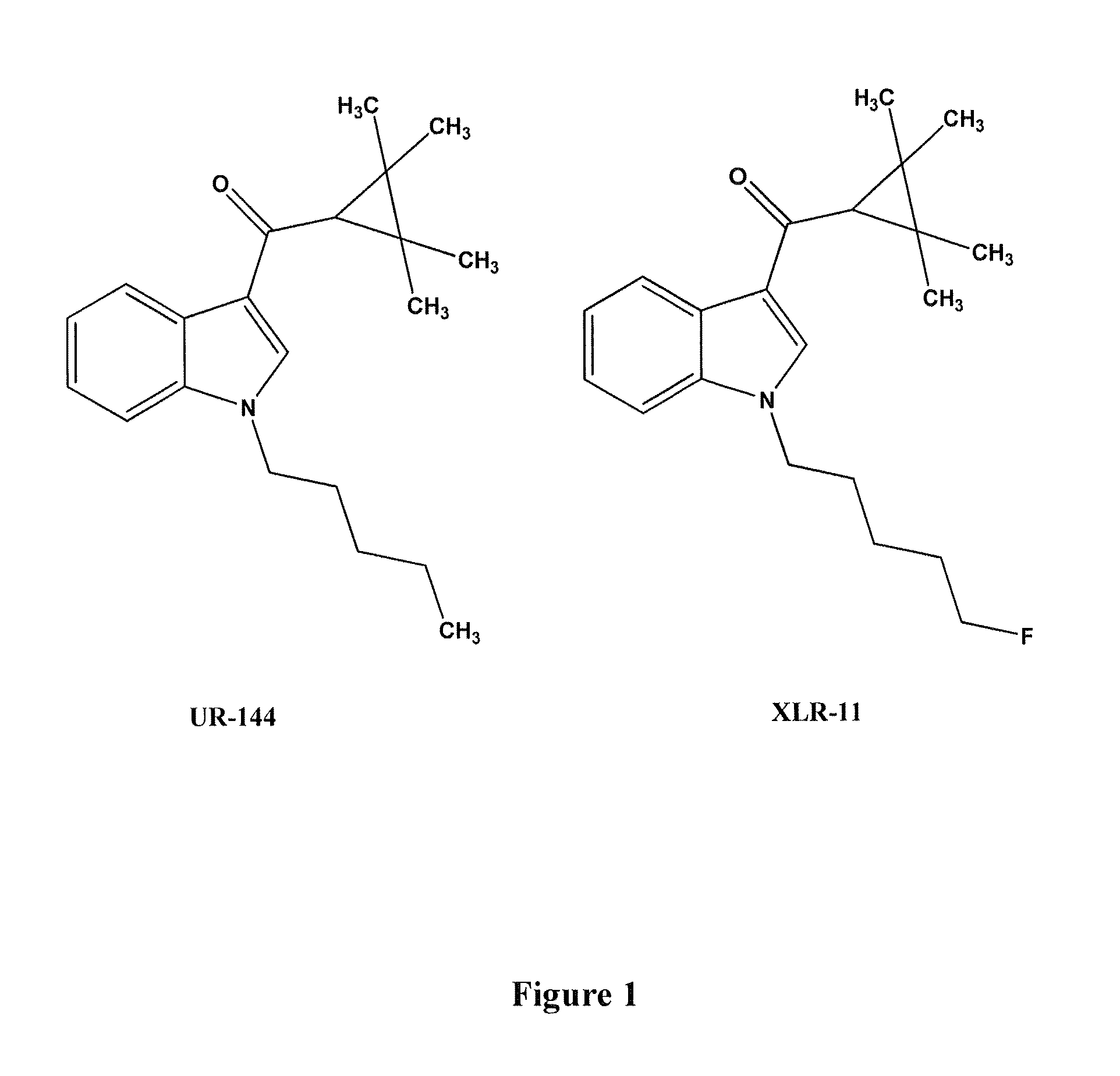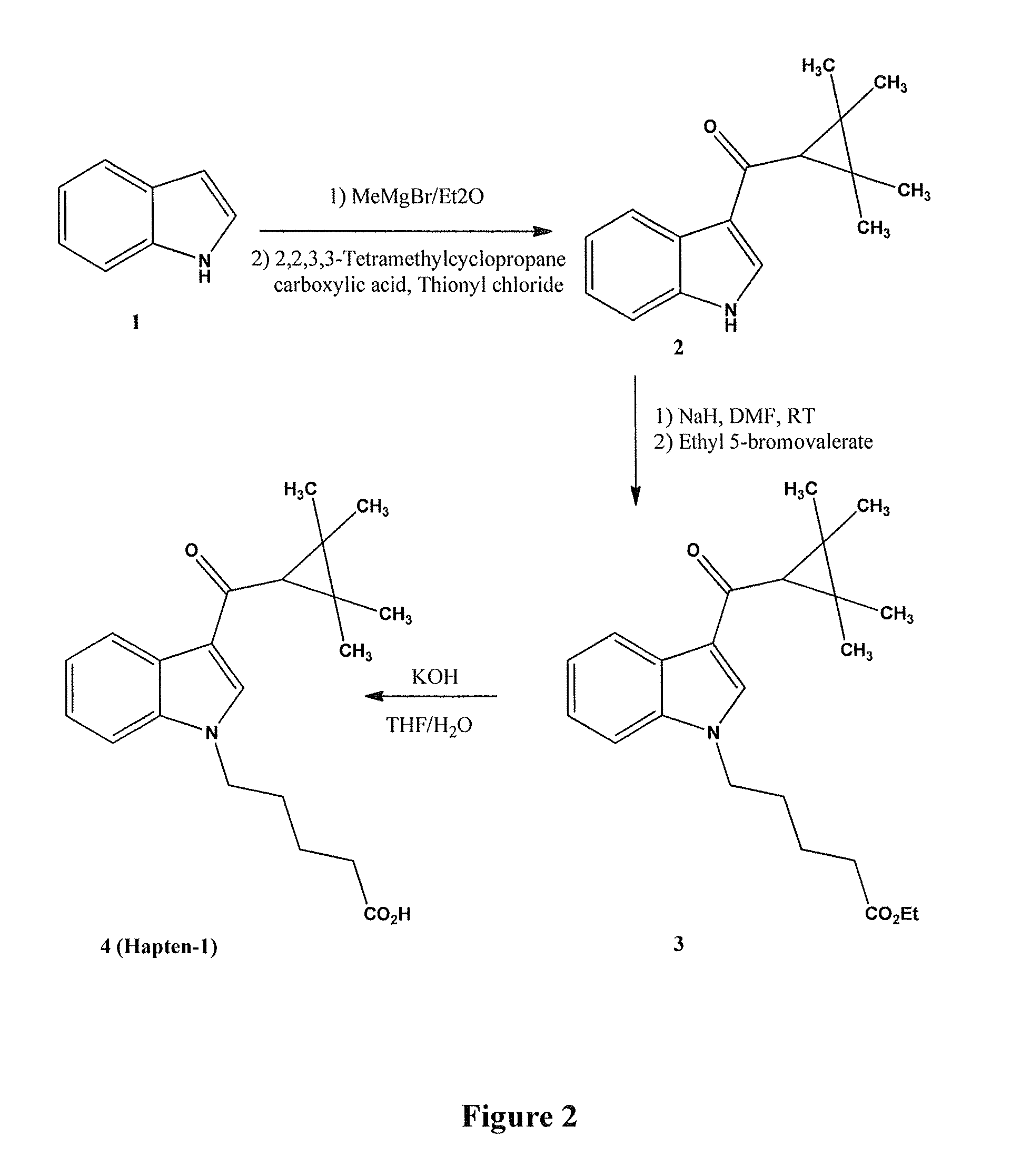Immunoassay for cyclopropylindole based synthetic cannabinoids, metabolites and derivatives thereof
a technology of synthetic cannabinoids and immunoassays, which is applied in the field of immunoassays for cyclopropylindole based synthetic cannabinoids, metabolites and derivatives thereof, can solve the problems of high cost of equipment and highly trained staff, unknown and unpredictable pharmacological and toxicological effects of many of these synthetic compounds in humans, and agitation, nausea vomiting, hallucinations,
- Summary
- Abstract
- Description
- Claims
- Application Information
AI Technical Summary
Problems solved by technology
Method used
Image
Examples
example 1
Preparation of N-Desalkyl UR-144 2
[0104]Indole 1 (11.7 g, 100 mmol) was dissolved in diethylether (100 ml) under nitrogen atmosphere and cooled to 0° C. 3M solution of MeMgBr (35 ml, 105 mmol) was added drop-wise and allowed to stir at room temperature for 3 hours. In the meantime, 2,2,3,3-tetramethylcyclopropane carboxylic acid (14.22 g, 100 mmol) was dissolved in thionyl chloride (100 ml) and refluxed for 90 min, then the solvent was removed under vacuo and the residue was dissolved in diethylether (100 ml). The resulting solution was added drop-wise to the indole reaction mixture at 0° C. and then allowed to stir at room temperature for 2 hours. A solution of ammonium chloride (200 ml) was added to the reaction mixture and the resulting mixture was stirred at room temperature overnight. The reaction mixture was extracted with ethyl acetate (3×200 ml). The combined organic extracts were washed by water, brine, dried over sodium sulfate, filtered and evaporated to dryness. The crud...
example 2
Preparation of UR-144 N-Pentanoic Acid Ethyl Ester 3
[0105]60% Sodium hydride in mineral oil (597 mg, 12.43 mmol) was suspended in dimethylformamide (25 ml) and n-desalkyl UR-144 2 (3 g, 5.54 mmol) was added portion wise at room temperature and the mixture was stirred for a further 30 min at room temperature after the addition was finished. Ethyl 5-bromovalerate (2.95 ml, 18.65 mmol) in dimethylformamide (10 ml) was added drop wise at room temperature and the reaction mixture was stirred at room temperature overnight. Solvents were removed in vacuo and the residue was partitioned between ethyl acetate (200 ml) and water (150 ml). The layers were separated and aqueous layer was extracted 2 times with ethyl acetate (2×100 ml). All the organic layers were combined, washed by water, brine, dried over sodium sulfate and evaporated to dryness. The residue obtained was purified by column chromatography (silica gel, 20% ethyl acetate in hexane) to give 3.68 g (80%) UR-144 N-pentanoic acid et...
example 3
Preparation of UR-144 N-Pentanoic Acid 4 (Hapten-1)
[0106]UR-144 N-pentanoic acid ethyl ester 3 (3.68 g, 9.96 mmol) was dissolved in a mixture of tertahydrofuran (30 ml) and water (30 ml), to this solution was added potassium hydroxide (1.31 g, 19.92 mmol). The reaction mixture was stirred at room temperature overnight. The solvent was removed in vacuo; the residue was acidified to pH 3 and extracted three times with a mixture 1:1 ethyl acetate:tetrahydrofuran (3×100 ml). The organic fractions were combined, washed by water, dried over sodium sulfate and evaporated to dryness. The residue was purified by column chromatography (silica gel, ethyl acetate) to give 2.5 g (74%) of UR-144 N-pentanoic acid 4 (Hapten-1) as a white solid.
[0107]NMR 13C (DMSO-d6): 194.358; 175.099; 137.218; 136.515; 126.696; 123.407; 122.688; 122.467; 119.337; 111.301; 46.633; 42.949; 33.968; 31.643; 29.902; 24.499 (2C); 22.646 and 17.913 (2C).
PUM
| Property | Measurement | Unit |
|---|---|---|
| pH | aaaaa | aaaaa |
| volume | aaaaa | aaaaa |
| temperature | aaaaa | aaaaa |
Abstract
Description
Claims
Application Information
 Login to View More
Login to View More - R&D
- Intellectual Property
- Life Sciences
- Materials
- Tech Scout
- Unparalleled Data Quality
- Higher Quality Content
- 60% Fewer Hallucinations
Browse by: Latest US Patents, China's latest patents, Technical Efficacy Thesaurus, Application Domain, Technology Topic, Popular Technical Reports.
© 2025 PatSnap. All rights reserved.Legal|Privacy policy|Modern Slavery Act Transparency Statement|Sitemap|About US| Contact US: help@patsnap.com



